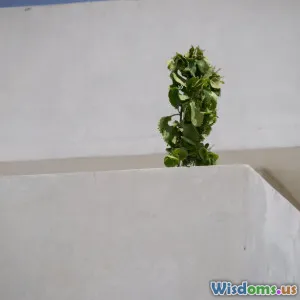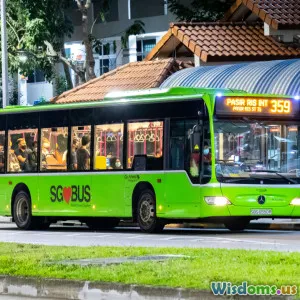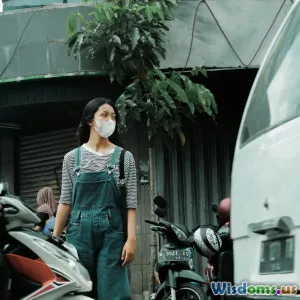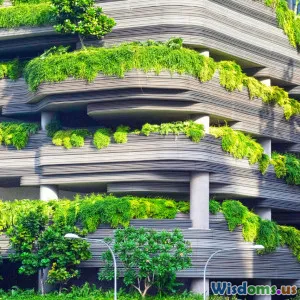
Should Cities Embrace Gaudi’s Playful Organic Architecture
9 min read Exploring the impact and potential benefits of Gaudí’s organic architecture on modern cities’ livability and aesthetics. (0 Reviews)
Should Cities Embrace Gaudí’s Playful Organic Architecture?
Introduction
Cities worldwide constantly seek architectural innovation to enhance both aesthetics and livability. Amidst glass skyscrapers and rigid grids, Antoni Gaudí's distinct organic architecture — characterized by flowing lines, vibrant colors, and nature-inspired forms — remains both a captivating and controversial influence. Should modern urban centers embrace Gaudí’s playful, organic design ethos to shape their skylines and community spaces? This article delves into his architectural legacy, analyzes its potential urban benefits, addresses practical concerns, and explores whether his visionary approach deserves a place in 21st-century city planning.
The Essence of Gaudí’s Organic Architecture
Antoni Gaudí (1852–1926) was a Catalan architect whose work defied conventional styles, heavily inspired by nature's geometry and forms. His buildings often feature curved stone, twisting wrought iron, and colorful mosaics with no straight lines — an architectural embodiment of organic growth and playful fantasy.
Gaudí believed architecture must integrate harmoniously with natural surroundings and human emotion. The hallmark of his work includes structures like:
- Sagrada Família (Barcelona): A still-incomplete basilica whose soaring spires resemble trees, merging religion with natural symbolism.
- Casa Batlló: Featuring a wave-like façade and bone-inspired balconies, it is a masterpiece of color and motion.
- Park Güell: A public park replete with imaginative benches, colonnades, and organic sculptures that invite interaction.
These works display architecture not as rigid or industrial but as a vibrant, multi-sensory experience deeply rooted in life’s organic rhythms.
Why Cities Should Consider Gaudí's Style
1. Enhancing Urban Livability and Human Well-being
Modern urban planning often prioritizes functionality but neglects how architectural aesthetics influence mental health. Research published in Environmental Health Perspectives suggests that connection with nature and organic environments improves stress reduction and cognitive recovery. Gaudí’s design, which seamlessly blends built environments with biomorphic forms, can foster soothing, restorative urban spaces.
For example, Park Güell attracts millions yearly by offering playful, warm spaces where people relax and socialize. Several cities face mental health crises linked to isolation and urban harshness; integrating Gaudí-inspired organic architecture could act as antidotes by instilling spaces that feel alive and inviting.
2. Promoting Sustainable Materials and Techniques
Gaudí pioneered extensive use of recycled ceramics and irregular stonework through trencadís mosaic techniques, effectively repurposing construction waste into vibrant art forms. Contemporary sustainable architecture can draw lessons from this waste-conscious ethos.
Moreover, his designs naturally promote ventilation and sunlight diffusion, lowering reliance on mechanical systems. Cities striving for carbon neutrality can find inspiration in Gaudí’s integration of form and function—inspired by nature to create efficient, eco-friendly buildings.
3. Celebrating Local Identity and Craftsmanship
While the modern glass box building often epitomizes globalization’s sameness, Gaudí’s architecture roots deeply in Catalan culture and craftsmanship. His attention to artisanal detail and local symbolism endows places with unique identity and pride.
Emulating this principle could help cities resist homogenization, promoting a renaissance of local artistry, economic development in traditional crafts, and tourism boons.
Challenges to Implementing Gaudí’s Designs in Modern Cities
Complexity and Cost
One of the chief criticisms of Gaudí’s work is its complexity and costliness. Curved surfaces and handcrafted elements demand specialized skills, longer installation times, and higher expenses. For budget-conscious urban planners, this can prove prohibitive.
Regulatory and Engineering Constraints
Modern building codes, zoning laws, and safety standards rely extensively on standardized shapes and proven materials. Organic architectures like Gaudí’s sometimes struggle to comply or require extensive adaptations.
Engineering such intricate forms demands advanced technologies like parametric modeling or 3D printing, which may be inaccessible or unfeasible in many cities. Hence, while digitally simulated replicas may be easier, authentic structural rarity is tougher to replicate broadly.
Functional Suitability
Certain organic forms might limit interior spatial organization or optimization required for busy commercial or residential usage. Designing for accessibility, emergency evacuation, and maintenance is also complicated by irregular shapes.
Real-world Examples and Emerging Trends
Beyond Barcelona, cities worldwide increasingly incorporate playful organic elements inspired by Gaudí and biomimicry:
- Valencia’s City of Arts and Sciences (Spain): Santiago Calatrava’s design features an organic-inspired skeleton-like structure that merges sculpture with urban function.
- The Eden Project (UK): A network of naturalistic biomes resembling giant bubbles fosters an educational, immersive environment blending technology and nature.
- Heydar Aliyev Center (Baku, Azerbaijan): Zaha Hadid’s project employs fluid geometries evoking Gaudí’s style but with modern materials and parametric design.
These examples demonstrate growing urban interest in playful, organic environments grounded in contextual culture and sustainability.
How Cities Can Integrate Gaudí’s Philosophy Today
Embracing Artisans and Technology
Cities must invest in training skilled craftspeople and leveraging cutting-edge 3D printing or robotics to scale complex organic forms efficiently, reducing costs.
Hybrid Architectural Approaches
Marrying Gaudí’s organic motifs with modular design can ease integration into dense urban fabrics while maintaining artistic playfulness.
Promoting Public Spaces and Community Engagement
Public parks, cultural centers, and pedestrian areas offer the ideal testing grounds for playful organic architecture. Engagement in participatory design fosters ownership and identity.
Policy Incentives
Grants, tax incentives, or zoning bonuses for sustainable, locally crafted organic projects can stimulate adoption.
Conclusion
Antoni Gaudí’s playful organic architecture challenges conventional urban design paradigms by creating spaces that celebrate life’s vibrancy, cultural identity, and environmental harmony. While not without challenges—complexity, cost, and regulatory hurdles—modern technological advances and shifting urban priorities toward sustainability and human-centric design renew its relevance.
Cities embracing Gaudí’s philosophy stand to gain more than aesthetic allure: they foster mental well-being, cultural pride, and sustainable futures. As urban populations swell and homogenization threatens uniqueness, playful organic architecture presents an inspired path to richer, healthier, and more enchanting cityscapes. In reimagining tomorrow’s urbanity, Gaudí’s legacy is not just worth preserving—it demands exploration and enthusiastic adoption.
References
- Kaplan, R., & Kaplan, S. (1989). The Experience of Nature: A Psychological Perspective.
- Environmental Health Perspectives (2015). "Nature and Mental Health".
- Antoni Gaudí Official Website: https://www.antoni-gaudi.com
- UNESCO World Heritage Centre: Works of Antoni Gaudí
- Cambridge University Press (2020). Sustainable Architecture and Biomimicry.
This article aims to inspire architects, planners, and citizens to thoughtfully consider how playful organic architecture can transform urban experience for the better.
Rate the Post
User Reviews
Other posts in Cultural Studies
Popular Posts















